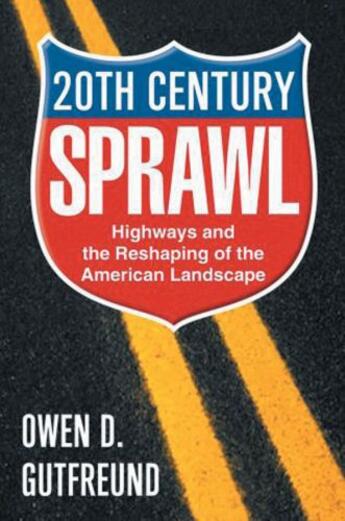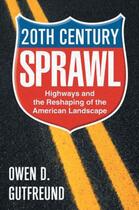Résumé:
Owen Gutfreund's Twentieth-Century Sprawl explains important--and largely unexamined--changes in the American landscape. He offers an illuminating look at how highways have dramatically transformed American communities, aiding growth and development in unsettled areas and undermining existing... Voir plus
Owen Gutfreund's Twentieth-Century Sprawl explains important--and largely unexamined--changes in the American landscape. He offers an illuminating look at how highways have dramatically transformed American communities, aiding growth and development in unsettled areas and undermining existing urban centers.
Gutfreund takes a "follow the money" approach to show how government policies--from as early as the 1890s--subsidized the spread of cities and fueled a chronic nationwide dependence on cars and roadbuilding, with little regard for expense, efficiency, ecological damage, or social equity. As federal, state, and local governments invested in toll-free highways, Americans moved in unprecedented numbers to newly accessible open land on the urban periphery. The consequence was the collapse of center cities, ballooning municipal debt, and rapidly increasing air pollution, not to mention profound changes in American society and culture.
Gutfreund tells the story via case studies of three communities--Denver, Colorado; Middlebury, Vermont; and Smyrna, Tennessee. Different as these places are, they all show the ways that government-sponsored highway development radically transformed America's cities and towns. Indeed, though seeming quite dissimilar, both Denver and Middlebury have crippling traffic problems; housing and commercial activity has sprawled outward, leaving downtown areas in danger of decay, while residents have longer commutes, fewer transportation options, and increasing concerns about air quality and environmental problems. Smyrna, once a dusty backwater, is now booming, thanks to its location near three interstate highways, which attracted a huge Nissan factory (the largest auto assembly plant in North America, the size of 92 football fields).
Based on original research and vividly written, Twentieth-Century Sprawl makes a major contribution to our understanding of issues that still plague our cities and suburbs today.
Donner votre avis









